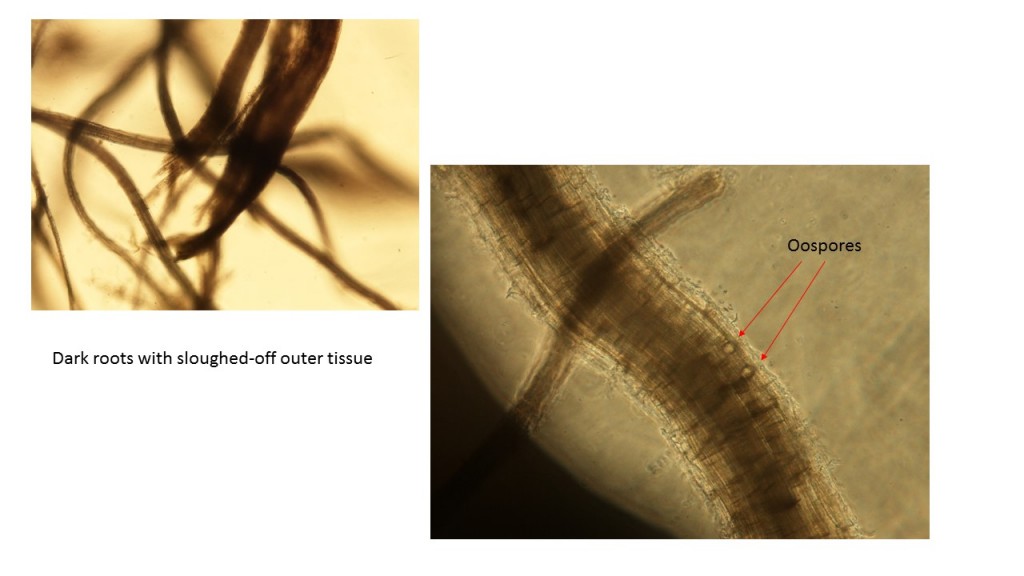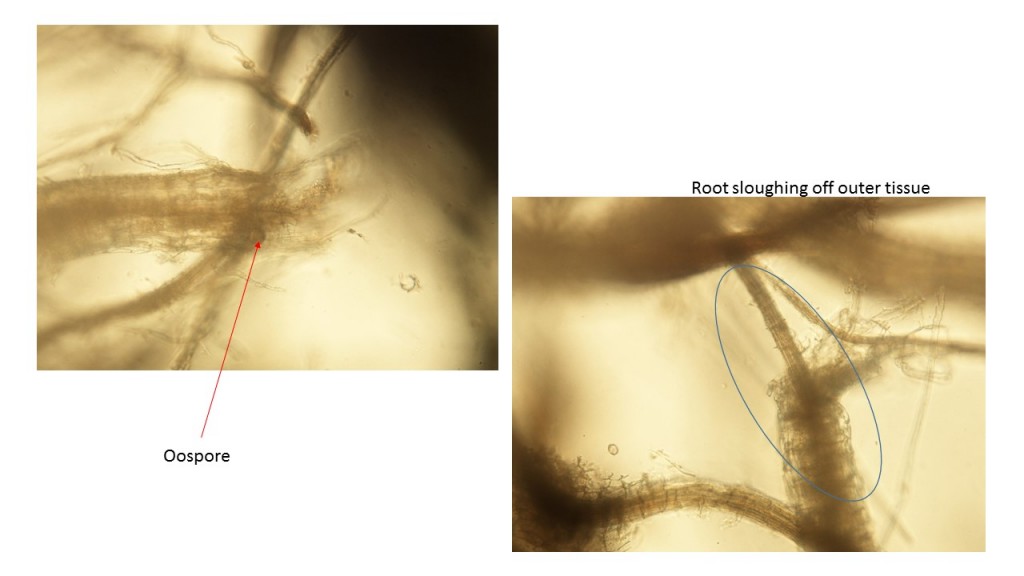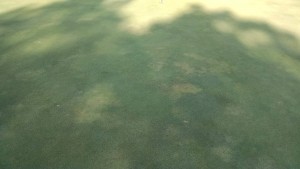(Megan Kennelly)
In the past 2 weeks we have posted a series of articles related to root health and rootzone management. I’m following up here with a few more photos (click to zoom any of the photos below).
Most of the samples have shown layering, thatch, and a build-up of organic matter. These can reduce drainage, and roots suffer from lack of oxygen. Furthermore, wet soils hold heat, so the turf gets a double whammy of wet + hot. Steam-cooked turf is not happy turf. I’ve seen some very unhappy roots lately. Some have Pythium root rot as well, some appear to be in serious decline just from the physiological stress.
We already posted a bunch of information about managing rootzones and some tips on what to do in the fall and in the future, so I won’t go into that here. Glance back at our recent posts. You might also like to read pages 6-7 on the following website by Paul Vincelli and Gregg Munshaw which discusses managing summer stress in putting greens:
http://www2.ca.uky.edu/agc/pubs/ppa/ppa1/ppa1.pdf
Here is some layering in several recent samples. I know it can be tough to convince golfers to let you aerify, but the consequences of NOT aerifying can be deadly when summer weather strikes.
This is an older push-up green with drainage issues in all this wet weather:
Here is a series of photos showing Pythium root rot and root decline symptoms:
Here is a field shot of the site that goes with the microscope pictures above:
Here is one more set of photos showing layering and decline. This site had root decline, Pythium root rot, algae, and some anthracnose crown rot. Those factors all like to co-mingle and cause problems. This superintendent said they are working on improving some drainage and rootzone issues that built up over time.















